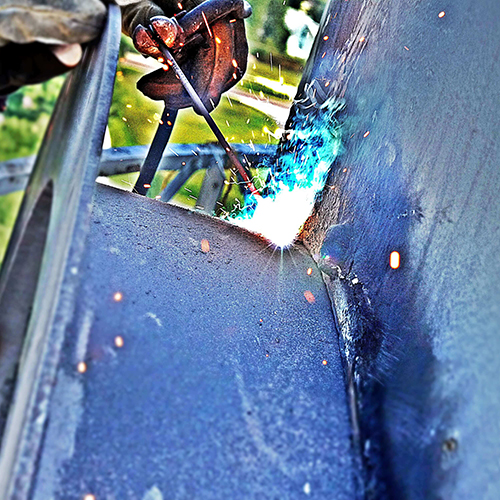Understanding OSHA Regulations for Water Tower Safety

Posted on February 23, 2023 by Brent Phillips
Water towers are essential to our water supply system and must remain safe and secure to ensure that the public is not at risk. But to do that, water towers must be regularly maintained and routinely inspected by certified NACE inspectors or repaired by qualified coating experts.
To ensure the safety and lives of these professionals, the Occupational Safety and Health Administration (OSHA) sets safety standards and regulations for working around municipal water towers. In today’s blog, we will provide an overview of OSHA regulations for safe water tower work practices and who is responsible for implementing these regulations into practice.
OSHA Safety Standards and Regulations
OSHA standards ensure water tower safety by administering planning recommendations and written regulations that help protect workers from potential hazards associated with working on or around water towers. There are several OSHA safety standards and regulations that impact site-specific planning for water towers:
- OSHA 1910.134: Respiratory protection
- OSHA 1910.252 Subpart Q: Welding, Cutting, and Brazing
- OSHA 1926.1412: Standards for personal fall arrest systems (PFAS)
OSHA 1910.134: Respiratory Protection
The OSHA respiratory protection regulations outline standards to protect and safeguard workers from inhalants. Respiratory diseases are often caused by breathing in air contaminants, whether harmful dust particulate, fumes, or gases, including sprays or vapors.
The objective is to protect employees’ respiratory health by providing adequate air ventilation and respirators in hazardous environments. The standards require that every employee is adequately trained and supplied with respirators to protect themselves from the immediate dangers to life or health, or IDLH.
Employers and city administrators with a respiratory protection program can better protect employees, contractors, and NACE inspectors in oxygen-deficient atmospheres when water towers get enclosed in a curtain for applying protective coatings.
OSHA 1910.252 Subpart Q: Welding, Cutting, and Brazing
OSHA 1910.252 Subpart Q provides workplace welding, cutting, and brazing guidelines. Although, as outlined in subpart Q, the requirements for safety equipment, protective clothing, ventilation systems, and other safety measures will vary from worksite to worksite based on the nature of the work being performed.
Common personal protective gear can include:
- Welding helmet
- Long-sleeved shirt and long pant
- Welding Gloves
It also guides how to prevent injuries, fires, and explosions during welding, cutting, and brazing activities. Additionally, it outlines the responsibilities of employers, employees, inspectors, and contractors regarding these activities.
OSHA 1926.1412: Standard Personal Fall Arrest Systems
OSHA 1926.1412 regulations outline personal fall arrest systems (PFAS) standards during construction work on ladders or scaffolds in elevated areas. The standard requires workers to wear a full-body harness and be connected to an anchor point while working vertically at heights above 6 feet.
That includes inspecting ladders, scaffolds, harnesses, anchors, and other components used in PFAS. The OSHA standard is an important safety measure that employees, inspectors, and contractors follow to ensure the safety of everyone working in elevated areas over 6 feet.
By following this standard, employers can reduce the risk of falls and create a safer workplace for employees, contractors, and inspectors.
Work With Certified NACE Inspectors and Qualified Protective Coating Specialists
Water towers are an essential part of any water supply system. Because these structures store and distribute water to municipalities, it’s a critical infrastructure. Ensuring these structures remain operational and within safety, compliance is paramount for any city that owns or operates a water tower.
That’s why you need the certified NACE inspectors at Cunningham to assess the state of your municipal water tower. After completing a thorough interior and exterior inspection, the NACE inspector will leave you with a comprehensive digital video using their state-of-the-art underwater ROV.
Any water tower in a fail state needs immediate repair. The Cunningham’s team of qualified coating specialists can complete those repairs and apply new corrosion protection to the inside and outside of the tower. Contact the team at Cunningham today or call (620) 848-3030.